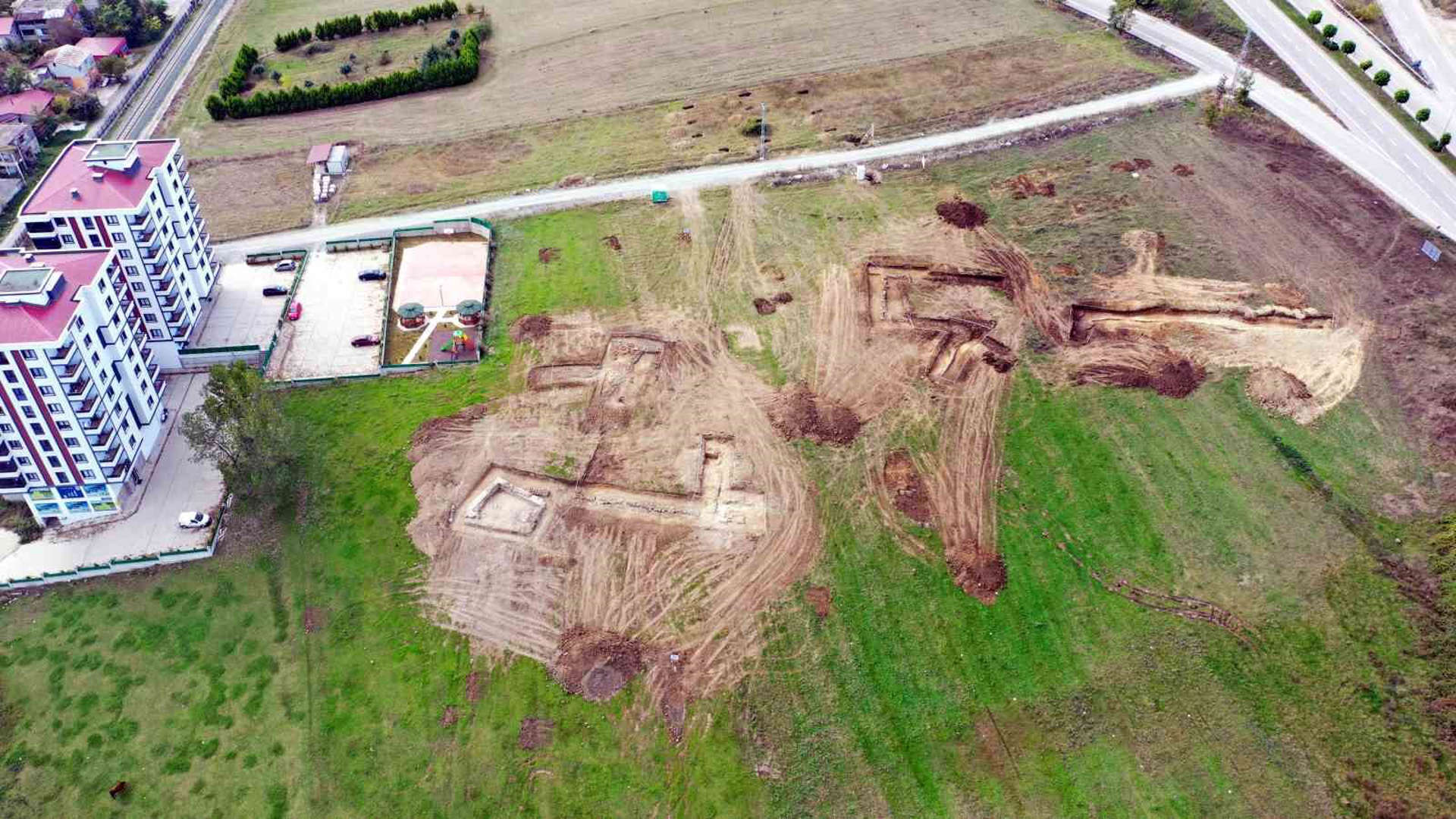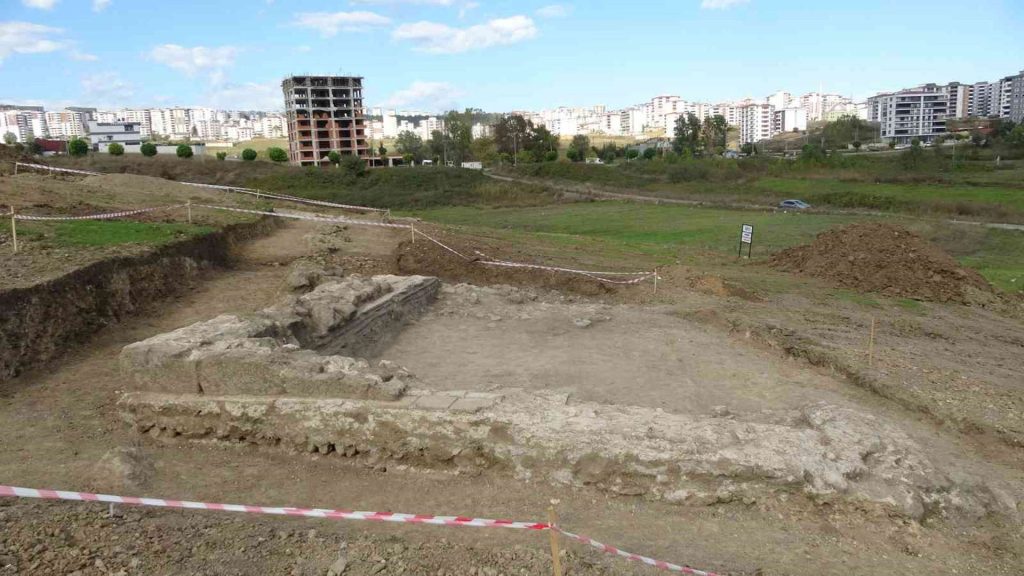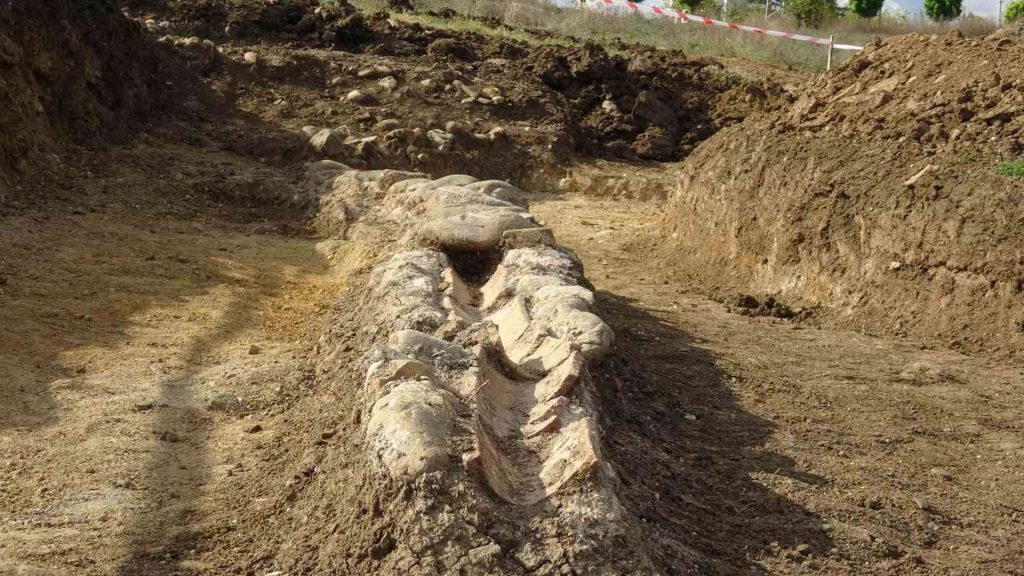
During the basic excavation, settlement dating back to the Roman and Hellenistic periods was discovered
A citizen in the northern Turkish city of Samsun, while excavating foundations for a residential construction, uncovered traces of a settlement that are considered to belong to the Hellenistic, Roman, and Eastern Roman periods.

İlkadım district, Tepecik neighborhood, a citizen initiated excavation work on their own titled land to build a house. During the foundation excavation, a settlement area dating back to the Hellenistic, Roman, and Eastern Roman periods was uncovered. After informing the authorities, the work was halted, and an examination was conducted by archaeologists.

The excavation revealed an infrastructure and water canal system in the area where the settlement traces were found, along with coins, tombs, roofing materials, tiles, and ceramic fragments dating back to that era. The area was cordoned off for protection by the İlkadım Municipality.

Adnan İpekdal, the Provincial Director of Culture and Tourism, providing information to an IHA reporter stated, “During the excavations in Tepecik Neighborhood, water canals and some structures dating back to the Roman and Hellenistic periods were uncovered. We have stopped the excavation. We are awaiting instructions from the ministry to continue the excavation. Both the individual construction and the excavation are currently halted. This is private property. The citizen had the necessary permits and approval from the municipality to build a house on his land and encountered these remains while excavating for the foundation. Upon the discovery of the remains, we halted the construction. Rescue excavation works will be initiated in the respective area.”

You may also like
- A 1700-year-old statue of Pan unearthed during the excavations at Polyeuktos in İstanbul
- The granary was found in the ancient city of Sebaste, founded by the first Roman emperor Augustus
- Donalar Kale Kapı Rock Tomb or Donalar Rock Tomb
- Theater emerges as works continue in ancient city of Perinthos
- Urartian King Argishti’s bronze shield revealed the name of an unknown country
- The religious center of Lycia, the ancient city of Letoon
- Who were the Luwians?
- A new study brings a fresh perspective on the Anatolian origin of the Indo-European languages
- Perhaps the oldest thermal treatment center in the world, which has been in continuous use for 2000 years -Basilica Therma Roman Bath or King’s Daughter-
- The largest synagogue of the ancient world, located in the ancient city of Sardis, is being restored











Leave a Reply